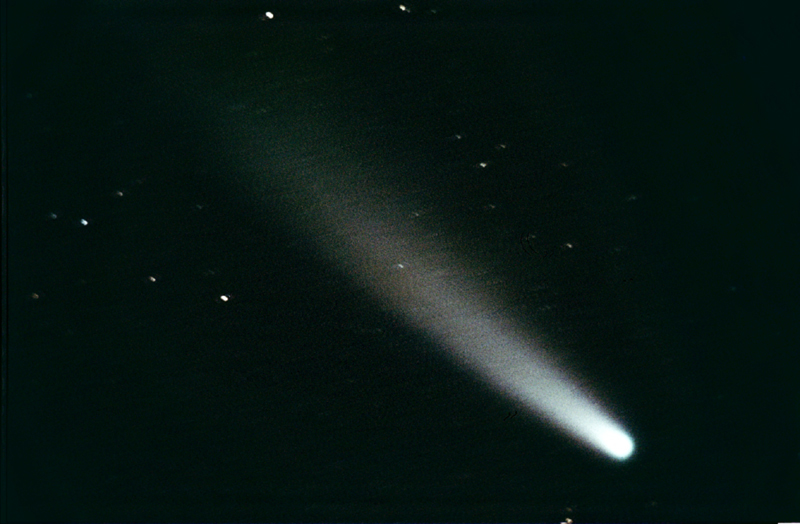
Comet 153P/ Ikeya-Zhang. March 22, 2002.
20 minutes exposure Fuji Superia 400 film.
5" f/5 refractor at prime focus.
2002 started out with a bang for comet observers when comet 153P/Ikeya-Zhang put on a very impressive display for northern hemisphere observers during March and April of 2002. Comet Ikeya-Zhang was discovered on February 1, 2002, as a 10th magnitude object very low in the evening twilight. The comet brightened steadily as it climbed higher in the western sky, becomming visible to the naked eye by the end of February, and peaking at around magnitude 2.7 during early April. Following perihelion, the comet faded slowly until the end of June, when it was around magnitude 9, and then faded rapidly, falling below 12th magnitude by mid August. At its best, the comet displayed a tail up to 4 degrees long to the naked eye, with numerous streamers.
My most vivid memory was from March 25 when the comet drifted past M33. At this time the comet was magnitude 3.7 and a very strong greenish colour. The coma was well condensed and about 7' across, while the tail could be followed for around 2 degrees with the naked eye and over 5 degrees in a 10" telescope. A few nights later and equally fine sight would have been presented as the comet drifted past M31. However the Minnesota weather was not co-operative and the conjunction was lost behind clouds.
My first observations of the comet were on March 22, 2002

Comet 153P/ Ikeya-Zhang. March 22, 2002.
20 minutes exposure Fuji Superia 400 film.
5" f/5 refractor at prime focus.
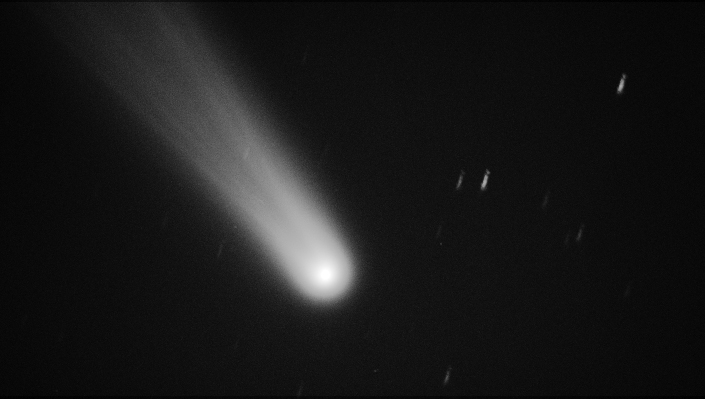
Comet 153P/ Ikeya-Zhang. March 23, 2002.
Combination of 10, 30-second images, SBIG ST-8E CCD.
8" f/6.3 Meade LX200 schmidt-cassegrain at prime focus.
On this night the comet was around magnitude 3.8 and displayed a naked eye tail around 2 degrees in length. The image below is the same as the above image, but processed with a median filter to minimise the stars and show the comet better.
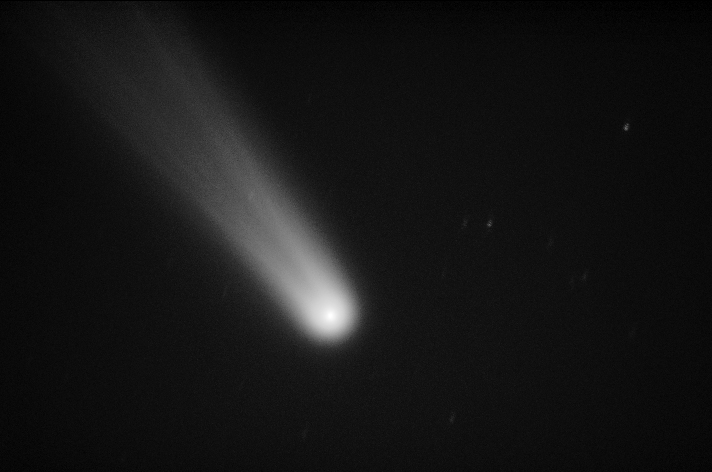
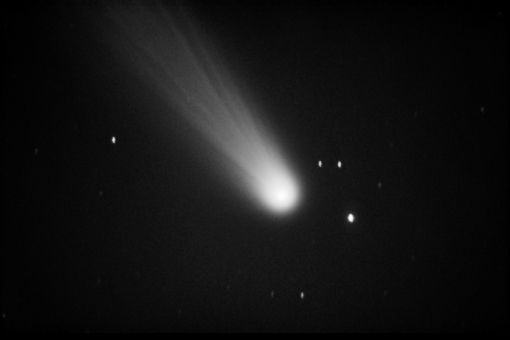
Comet 153P/ Ikeya-Zhang. March 26, 2002.
Combination of 4, 30-second images, SBIG ST-8E CCD, binned 3 x 3.
8" f/6.3 Meade LX200 schmidt-cassegrain at prime focus.
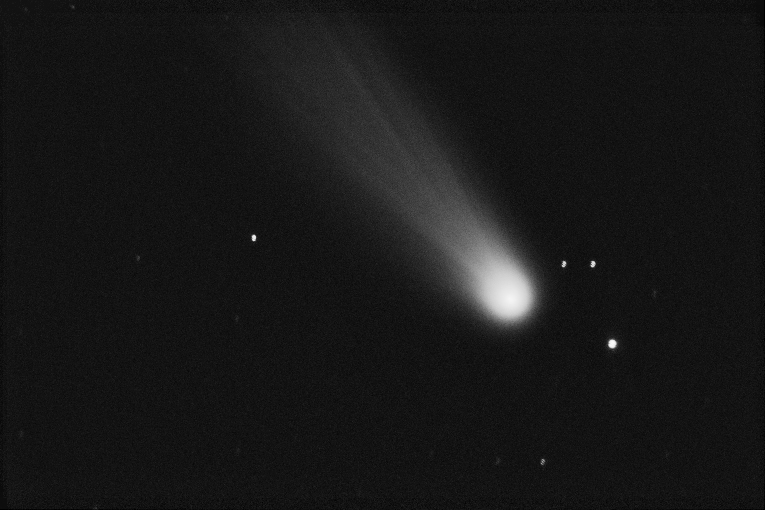
Comet 153P/ Ikeya-Zhang. March 26, 2002.
Combination of 11, 30-second images, SBIG ST-8E CCD.
8" f/6.3 Meade LX200 schmidt-cassegrain at prime focus.
It the telescope, the comet displayed a beautiful ion tail more than 4 degrees long. Numerous faint streamers were visible within the tail as can be seen in the images. The coma was parabolic, indicating a substancial amount of dust, and contained a bright, well condensed central condensation.
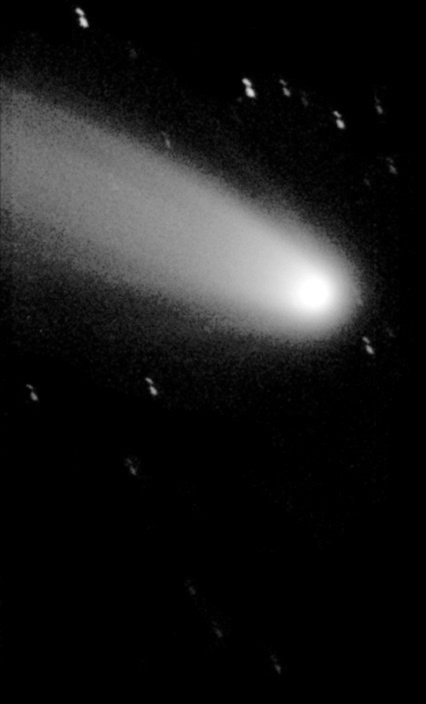
Comet 153P/ Ikeya-Zhang. March 29, 2002.
Combination of 11, 30-second images, SBIG ST-8E CCD.
8" f/6.3 Meade LX200 schmidt-cassegrain at prime focus.
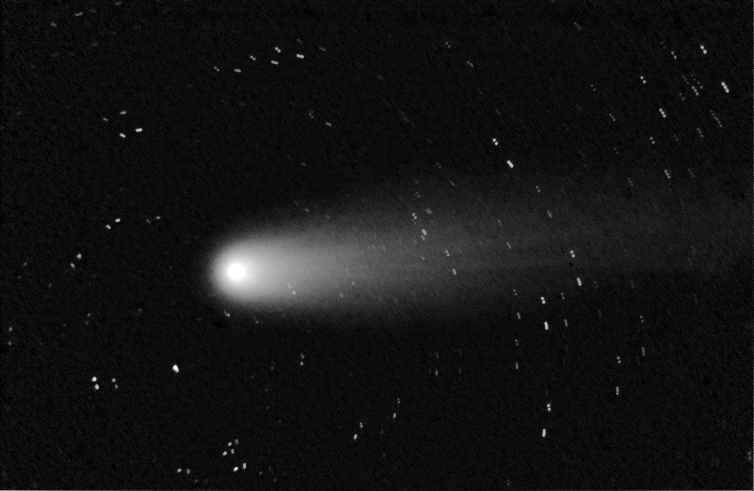
Comet 153P/ Ikeya-Zhang. April 5, 2002.
Combination of 6, 30-second images, SBIG ST-8E CCD.
8" f/10 Meade LX200 schmidt-cassegrain and an f/3.3 focal reducer.
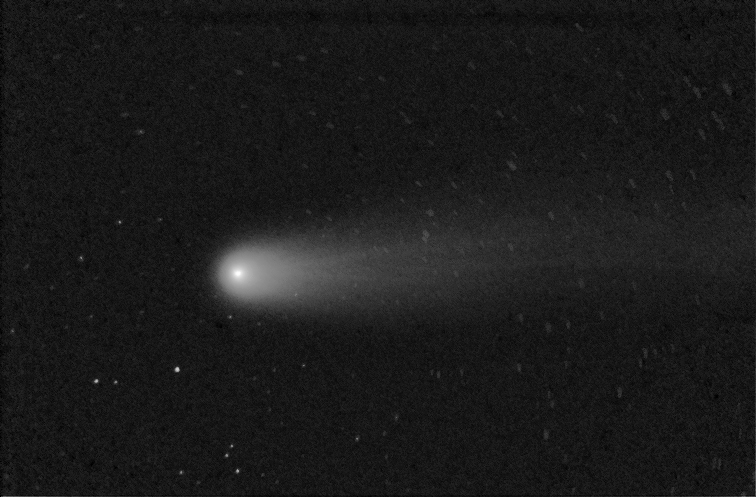
Comet 153P/ Ikeya-Zhang. April 5, 2002.
Same image as above but processed with a median filter to remove the stars.
By May, the comet had faded noticeably, although it was still easily visible to the naked eye. The tail however had faded considerably.
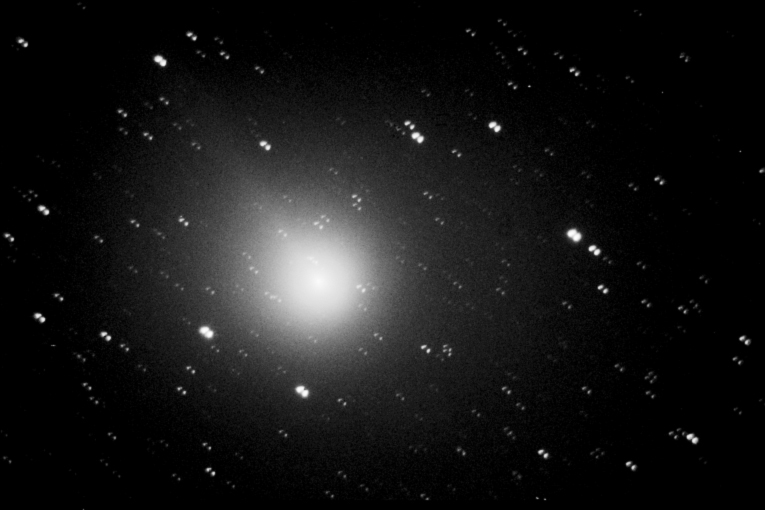
Comet 153P/ Ikeya-Zhang. May 5, 2002.
Combination of 2, 1-minute images, SBIG ST-8E CCD.
8" f/6.3 Meade LX200 schmidt-cassegrain at prime focus.
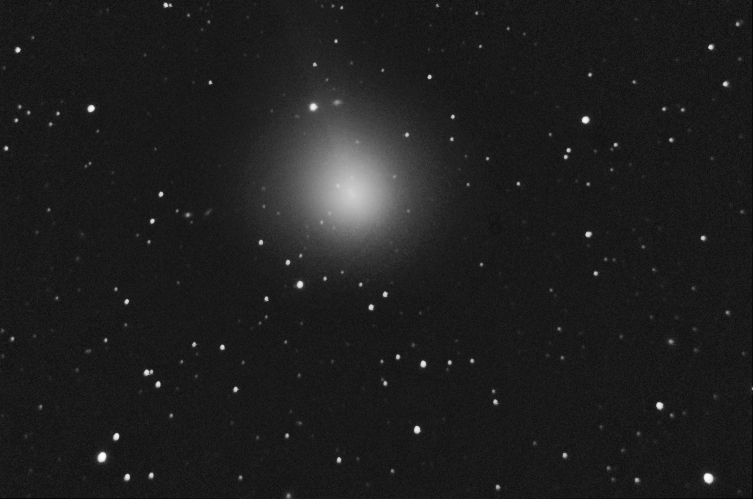
Comet 153P/ Ikeya-Zhang. May 15, 2002.
1 minute exposure, SBIG ST-8E CCD.
8" f/6.3 Meade LX200 schmidt-cassegrain at prime focus.
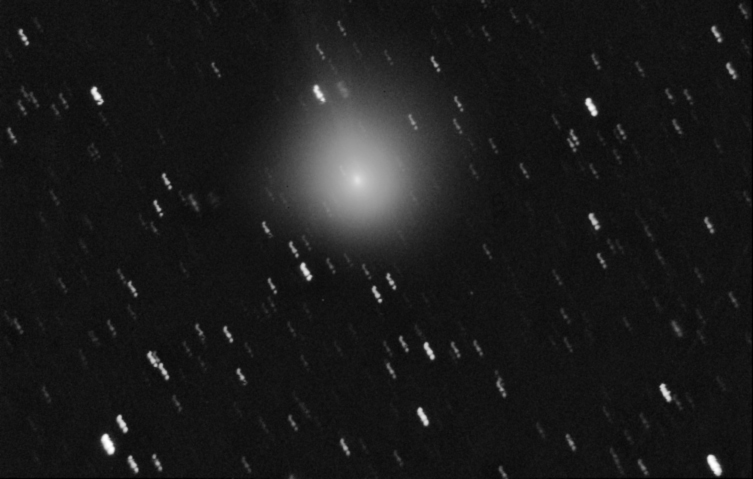
Comet 153P/ Ikeya-Zhang. May 15, 2002.
Combination of 5, 1-minute images, SBIG ST-8E CCD.
8" f/6.3 Meade LX200 schmidt-cassegrain at prime focus.
On this night the comet was passing through a region containing numerous faint galaxies. In the image below, the individual images from above have been aligned by the stars rather than the comet. This shows the galaxies much better. A few of them have been marked, however there are many more in the image. Those that have been marked are;
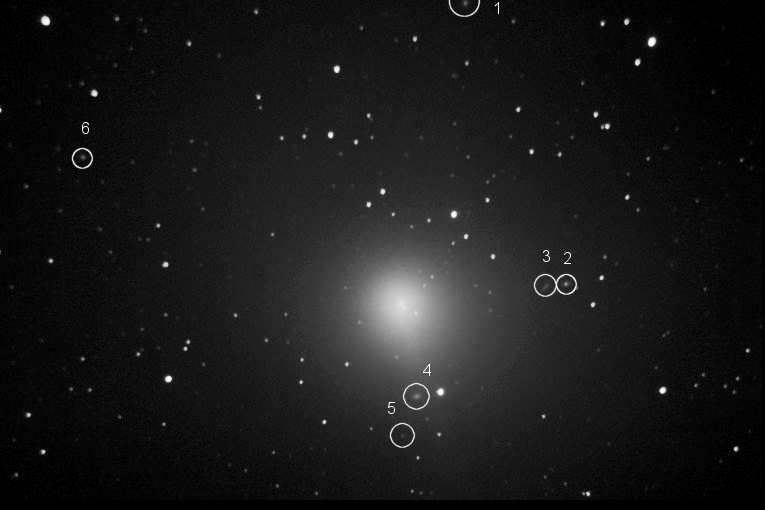
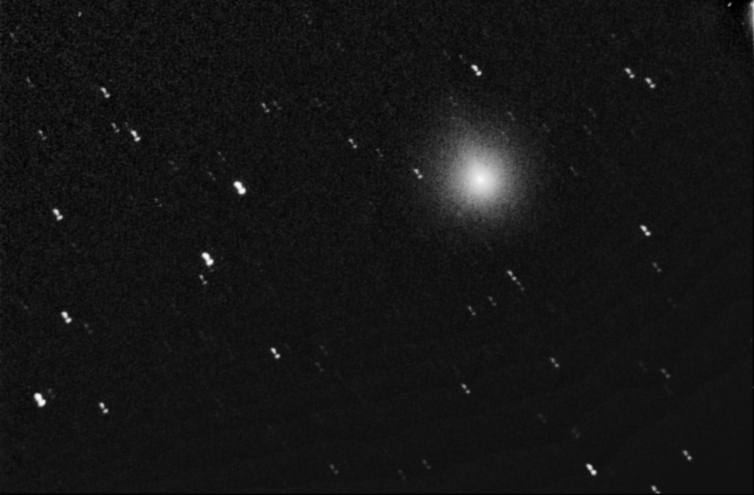
Comet 153P/ Ikeya-Zhang. May 19, 2002.
Combination of 5, 1 minute images, SBIG ST-8E CCD.
8" f/6.3 Meade LX200 schmidt-cassegrain at prime focus.
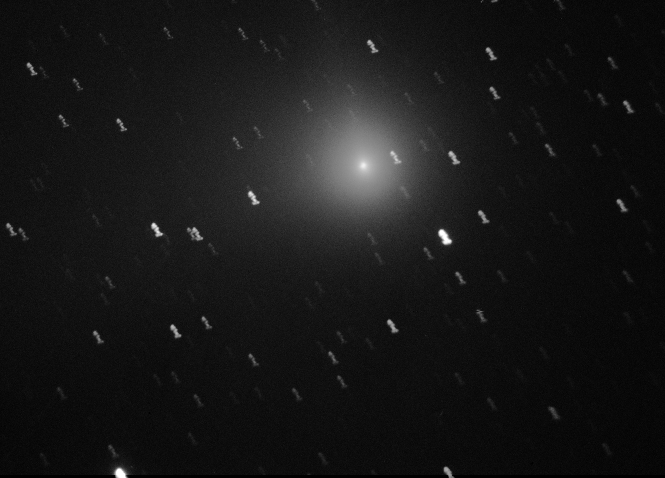
Comet 153P/ Ikeya-Zhang. May 22, 2002.
Combination of 6, 1 minute images, SBIG ST-8E CCD.
8" f/6.3 Meade LX200 schmidt-cassegrain at prime focus.
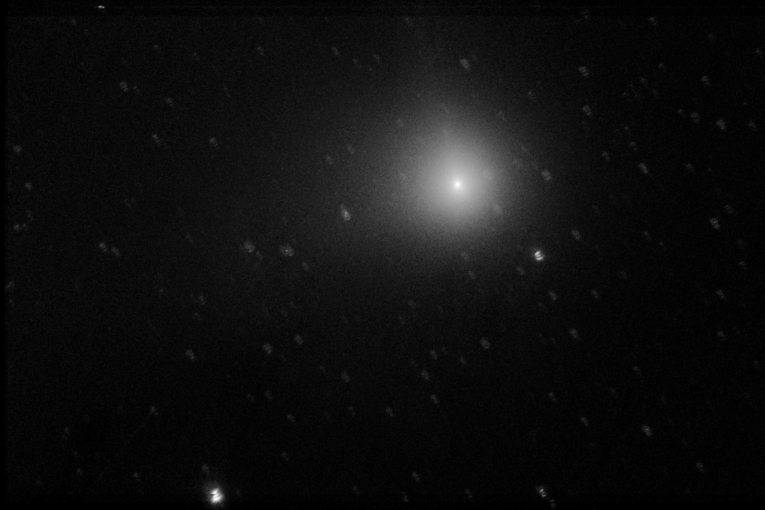
Comet 153P/ Ikeya-Zhang. May 22, 2002.
The above image, processed with a median filter to minimise the stars and show the comet better.
During June, the comet continued to fade steadily, however the tail became more side-on to the Earth and more visible, reaching up to 2 degrees.
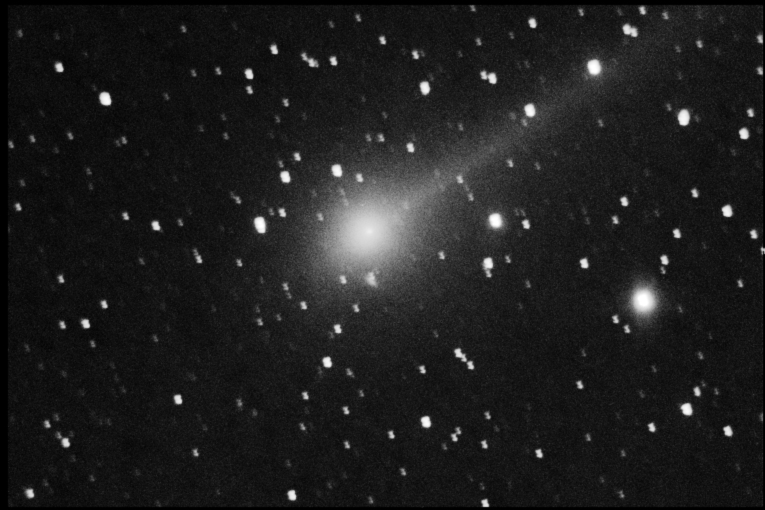
Comet 153P/ Ikeya-Zhang. June 16, 2002.
Combination of 6, 1 minute images, SBIG ST-8E CCD.
8" f/6.3 Meade LX200 schmidt-cassegrain at prime focus.
By this time the comet had faded to around magnitude 7, but still displayed a well condensed coma and a 2 degree tail in a 10" telescope.